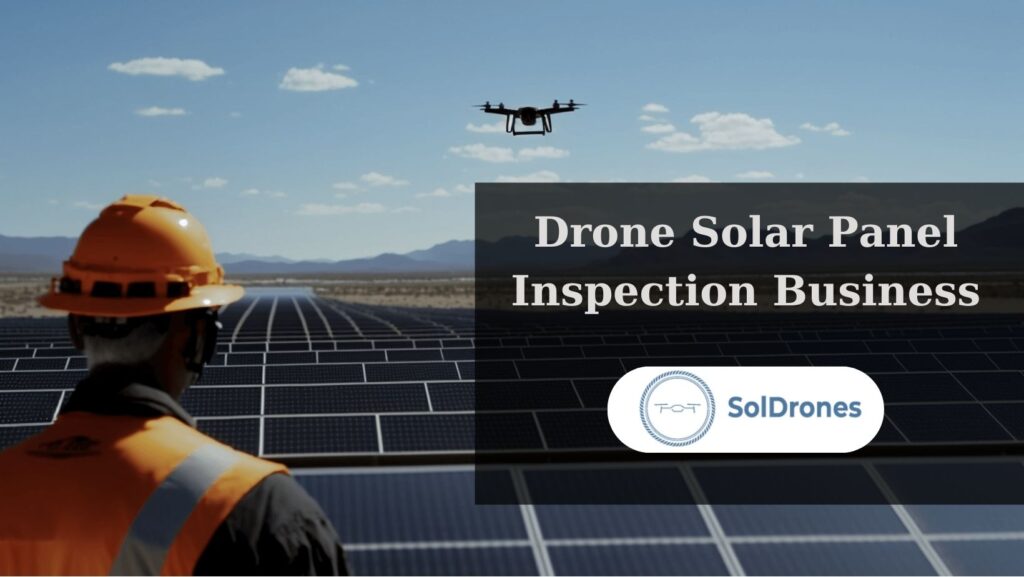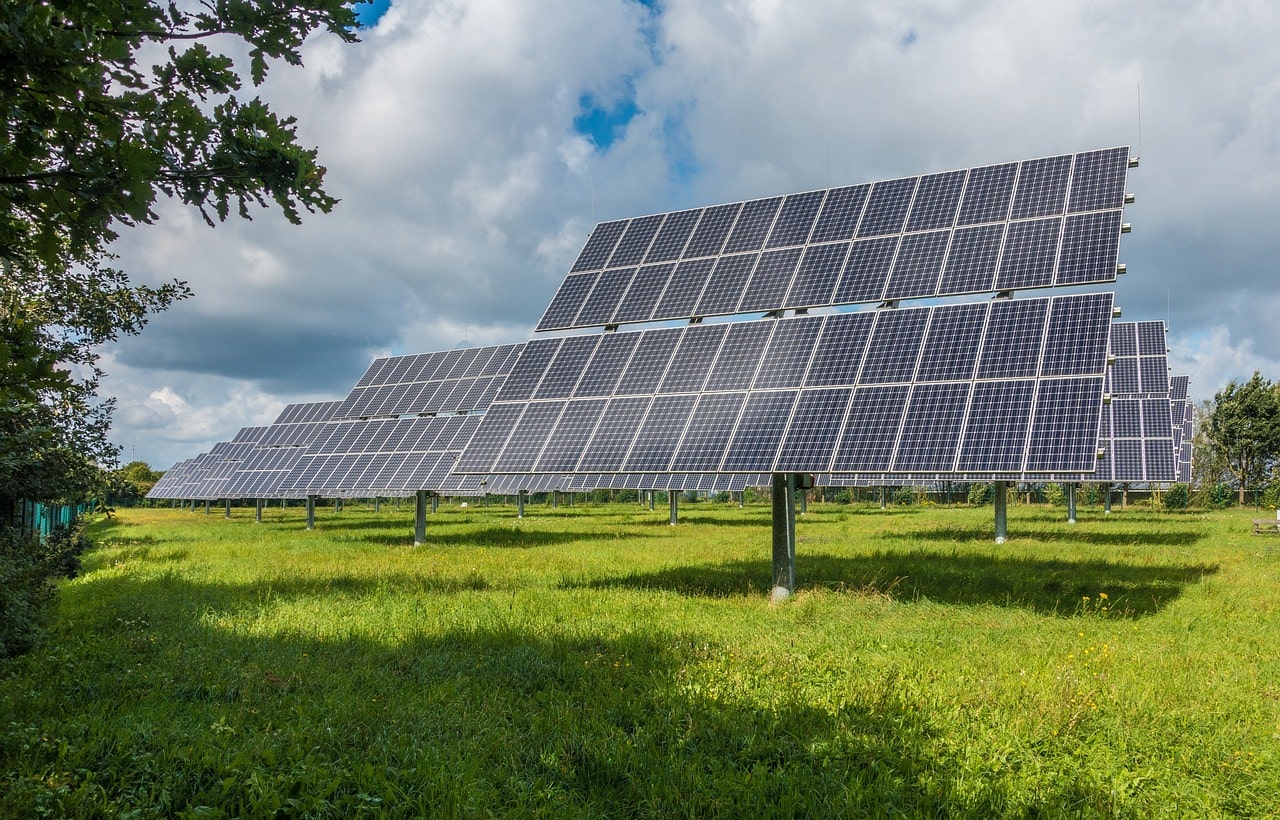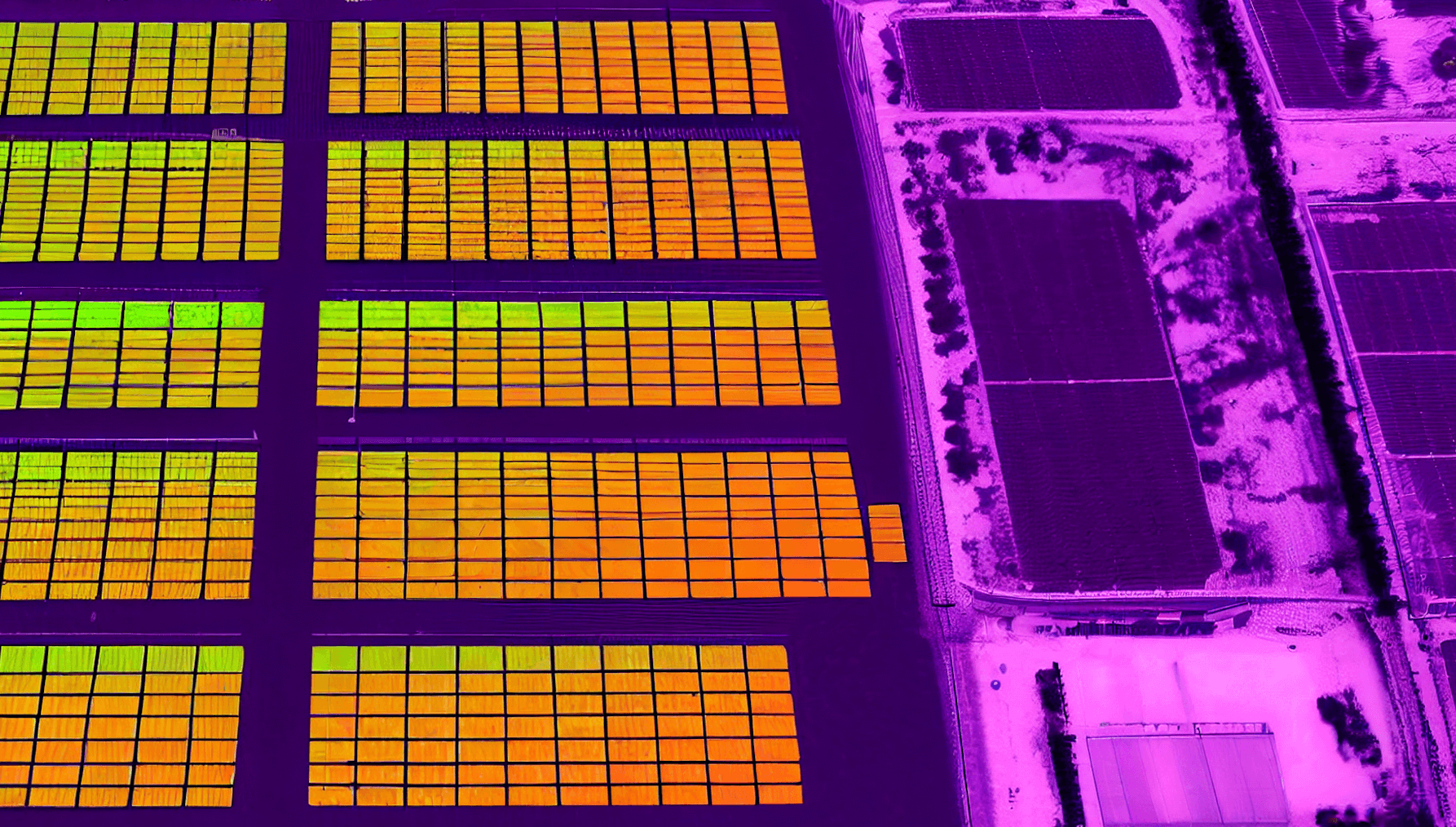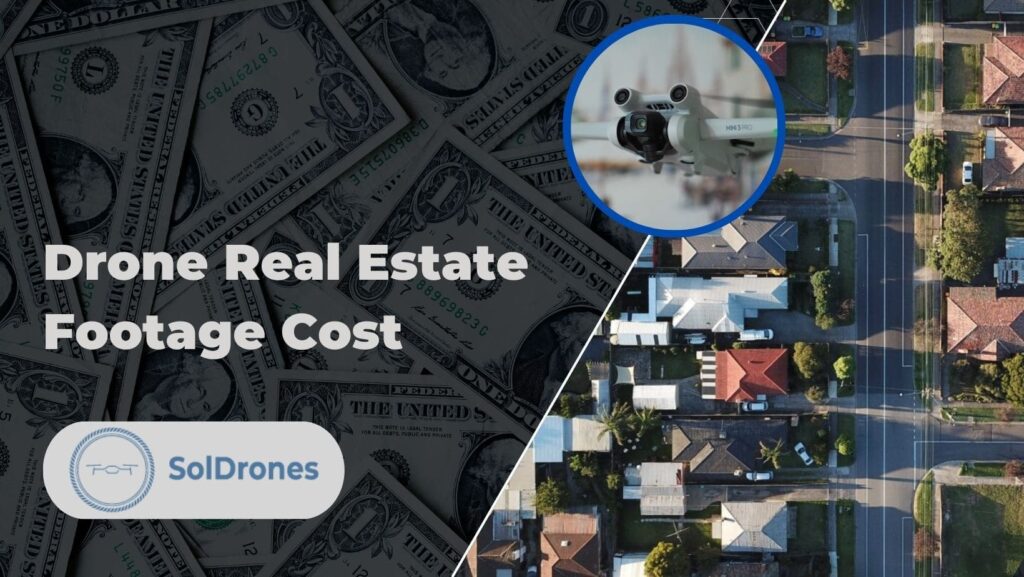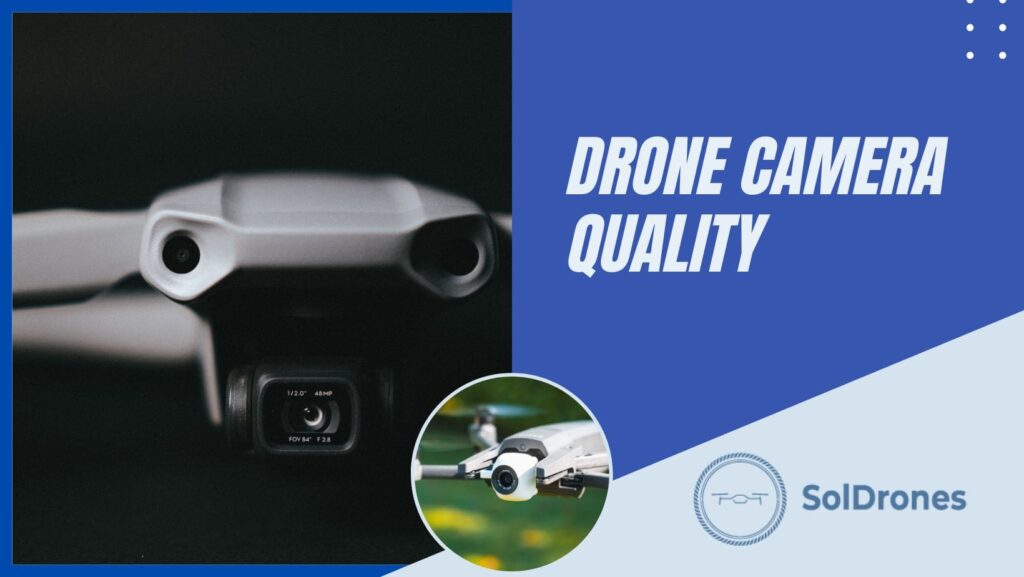By 2026, global renewable electricity capacity will rise more than 80 percent from 2020 levels. Two-thirds of this growth will come from solar energy. This creates a massive opportunity for businesses servicing the production and services of solar energy, such as solar panel drone inspectors.
In this article, we review the fundamentals of how to start a drone solar panel inspection business and what you need to keep in mind to ensure rise to the top and beat out the competition. We’ll explore the increasing need for solar panel inspections, the limitations of traditional inspection methods, and the benefits of using drone technology in solar panel inspections. We’ll also discuss types of defects that can be detected and real-world applications, along with steps for starting or improving your inspection business.
Article Highlights:
- Solar panel inspections via drones are highly efficient compared to traditional inspection techniques
- Common inspection techniques include Electroluminescence (EL) Imaging, Aerial Thermography, and Multispectral Imaging
- Equipment and software applications will aid your efficiency and operations
The Need for Solar Panel Inspection
Ensuring the efficiency and productivity of solar farms is essential in order to maximize output and reduce downtime. If you’re a solar panel inspector that’s interested in incorporating drones into your business, you’re well aware of why it’s critical to inspect solar panels. Any panel with issues – from dust particles to complete malfunctions – will negatively impact the system’s productivity and energy output and, ultimately, revenue.
Inspecting solar panels is nothing new, but traditional inspection methods have their limitations, making it challenging to identify problems in the early stages. That’s where drone technology comes in.
Traditional Inspection Methods
Manual inspection with handheld thermal cameras has been a primary method for solar panel inspection for quite some time. However, there are some limitations to this process of inspection. Primarily, inspections are time-consuming and it’s challenging to detect small defects. Inspectors are also at risk of falls, electric hazards, or damaging equipment on the solar farm or rooftop.
Evidentially, it’s become clear to the solar industry that manual inspection is not the most efficient or effective method.
Drone Technology in Solar Panel Inspection
As the renewable industry continues to evolve, unmanned aerial vehicles (UAVs) – or drones – are making strong headway for indisputable reasons. Drone technology offers numerous advantages for solar panel inspection.
Drones can quickly capture high-quality images and data, which can be analyzed to detect defects and issues. This ultimately helps reduce costs and increase efficiency.
Some of the major benefits of using drones for solar panel inspections include:
- Increased Efficiency: Drone technology allows for quick and efficient inspections, reducing the time and resources required.
- Improved Quality and Volume of Data: Drone cameras can capture high-resolution images and data, providing a more detailed picture of the solar panels’ condition.
- Enhanced Safety: Drones can be flown at high altitudes, reducing the risk of falls and other hazards that traditional inspection methods present.
- Reduced Costs: Drone inspections require fewer resources, resulting in cost savings.
- Easy Storage, Tracking, and Distribution of Data: The data collected during drone inspections can be stored, tracked, and distributed with ease, making it easier for inspectors to analyze and act on the information.
Drone Inspection Techniques
Drones offer major benefits to inspecting solar energy systems. A few of the most common inspection techniques include:
- Electroluminescence (EL) Imaging: EL imaging is a technique that uses the light produced by solar panels when an electric current is applied to them. By analyzing the light patterns, drones can detect cracks, hotspots, and other defects in solar panels.
- Aerial Thermography: Drones equipped with thermal cameras can capture aerial thermography images of solar panels. This technique can help detect temperature differences across the panel’s surface, which can indicate defects such as hotspots.
- Multispectral Imaging: This technique uses sensors that can capture images in different spectral bands. By analyzing the images, drones can detect defects that are invisible to the naked eye, such as discolorations and material degradation.
- Ultraviolet (UV) Imaging: Ultraviolet imaging is a technique that uses UV light to reveal defects such as cracks and delaminations. Drones equipped with UV sensors can capture images that reveal the presence of these defects.
- Photoluminescence Imaging: This technique uses a laser to generate light from solar panels. The light produced is analyzed to detect defects in the solar panels.
By using a combination of these techniques, drones can provide a comprehensive analysis of the solar panels‘ health and detect defects that may have been missed with traditional inspection methods. The data collected by drones is also more accurate and detailed, providing valuable insights to solar panel owners and operators.
Overall, the use of drone technology in solar panel inspections is a game-changer for the renewable energy industry. Preventative maintenance, detecting malfunctioning modules, ensuring maximum performance, and improving safety, are some of the key benefits that arise from solar panel inspections. With the ability to inspect solar panels quickly, accurately, and safely, drone-powered solar panel inspections are poised to become the go-to method for inspecting solar farms and assets.
Types of Defects Detected in Solar Panel Inspection
During an inspection, several types of defects can be detected in solar panels. Cell mismatch defects are a common issue caused by a faulty manufacturing process that can result in uneven electrical output. Panel cracks are also common due to temperature changes or impacts from foreign objects, which can lead to the breakdown of the solar panel. Discolorations on the surface of a solar panel may indicate corrosion, a buildup of dust, or debris, which can reduce the efficiency of the panel. Delaminations are another type of defect that occurs when the layers of a solar panel separate, and it can lead to reduced performance. Lastly, hotspots, which are areas that are significantly hotter than the surrounding cells, can be detected through thermal infrared imagery, and they can indicate problems such as mismatched cells or damage to the solar panel.
By detecting these defects early, system managers can reduce repair costs and prevent further damage to their solar panels.
Real World Applications
Drone-powered solar panel inspections have been successful in various industries. Rooftop systems on schools, business complexes, shopping centers, and residential housing are all prone to malfunctions. In many cases, solar systems that are on rooftops are difficult to get to and pose risks for inspectors. A drone pilot can reduce these risks by simply flying above the roof and inspecting the system with an infrared camera from an aerial view. In addition, drone inspections have been utilized to inspect solar panels on large-scale solar farms, improving efficiency and reducing costs.
With solar production increasing, the demand for drone-powered solar panel inspections will continue to grow.
Getting Started with a Drone Solar Panel Inspection Business
Starting a drone solar panel inspection business requires the right equipment, training, and knowledge. If you’re completely new to flying drones, the first step will likely be to obtain a remote pilot certificate from the Federal Aviation Administration (FAA). This certification is required for anyone who wants to operate a drone for commercial purposes.
The following section review some additional steps to consider when getting started:
- Pilot Certifications: Before you can operate a drone for commercial purposes, you must obtain a Remote Pilot Certificate from the Federal Aviation Administration (FAA). This requires passing the Part 107 Exam.
- Equipment: To perform solar panel inspections, you will need a drone with a high-quality camera and thermal imaging capabilities. You may also need equipment to visualize additional equipment such as a visualization software tablet for controlling the drone and software for analyzing the data.
- Inspection Checklist: To ensure that you are conducting thorough inspections, it is important to develop a checklist that outlines the steps you will take during an inspection. Your checklist should include items such as checking for cracks, discolorations, and hotspots.
- Customer Acquisition: There are many potential customers for your drone panel inspection business, including solar panel owners, operators, and maintenance companies. You can market your services by attending industry conferences and events, advertising in industry publications, and leveraging social media.
- Start with PV Systems: Once you have obtained the necessary certifications and equipment, developed your inspection checklist, and found customers, you can begin offering your services. Be sure to take detailed notes during inspections and provide customers with high-quality reports that include images and thermal data.
Drones & Equipment
As a drone pilot, you’ll need to become familiar with the various types of drones and equipment you’ll need to conduct a high-quality inspection. A few drones to consider looking into are as follows:
- DJI Mavic 2 Enterprise Advanced: Equipped with a high-resolution camera, thermal imaging capabilities, and advanced obstacle avoidance technology, the DJI Mavic 2 Enterprise Advanced is a reliable choice for solar panel inspections. Its compact design and foldable propellers also make it easy to transport to and from inspection sites.
- Autel Robotics EVO II: With a 48-megapixel camera and 8k video capabilities, the Autel Robotics EVO II is an ideal drone for capturing high-quality images and video of solar panels. Its 40-minute flight time and intelligent battery management system also ensure that you can conduct inspections efficiently.
- Skydio 2: This autonomous drone is designed for advanced aerial imaging and mapping, making it a great option for solar panel inspections. Its 4k camera and 12-megapixel sensor produce clear, high-quality images, and its intelligent flight modes allow you to fly in tight spaces without worrying about obstacles.
When choosing a drone for solar panel inspections, it’s important to consider factors such as flight time, camera quality, and obstacle avoidance technology to ensure a safe and efficient inspection.
Solar Panel Inspection Software
As you’re building your drone inspection business, you’ll want to consider investing in software platforms that can help you process, analyze, and interpret the data. Using reliable and effective software for solar panel inspection is crucial for maximizing the efficiency and accuracy of the inspection process. These software solutions offer advanced features such as data analysis, reporting, and tracking that can help identify and address issues in a timely manner, ultimately saving time and resources for the solar panel inspection business. A few examples
- Hammer Mission: Hammer Missions is a software specifically designed for solar inspections, providing accurate thermal data and high-resolution imagery. It allows for automated flights and data collection, reducing the need for manual intervention. Hammer Missions also includes an intuitive interface and real-time monitoring, making it easier for drone pilots to conduct solar inspections efficiently and effectively.
- DroneDeploy: DroneDeploy is a cloud-based drone software platform that provides drone mapping and inspection solutions. It offers a solar panel inspection feature that uses drone imagery and thermal imaging to inspect and analyze solar panels for faults and defects.
- DJI Ground Station Pro: GSPro is a powerful software application designed specifically for DJI drones. It allows drone pilots to plan and execute automated flights, enabling them to cover large areas quickly and efficiently. The software is particularly useful for conducting aerial surveys, inspections, and mapping missions, including solar panel inspections. GSPro is a reliable and intuitive tool that helps drone pilots to fly their drones with greater precision and control, ultimately producing more accurate and detailed data.
Final Thoughts
As you’re well aware by now, there’s a massive opportunity to level up your inspection business by embracing drone technology. Traditional inspection methods have limitations, making it challenging to identify problems in the early stages. In contrast, drone technology offers numerous advantages, including increased efficiency, improved data quality, enhanced safety, and reduced costs.
As a commercial drone pilot, you open up the possibilities of providing valuable insights to solar panel owners and operators, helping ensure that renewable energy production continues to thrive. By detecting defects early, system managers can reduce repair costs and prevent further damage to their solar panels.
With the solar industry growing, the demand for efficient and accurate solar panel inspections will only increase, making it a great opportunity for businesses in the production and services of solar energy.

